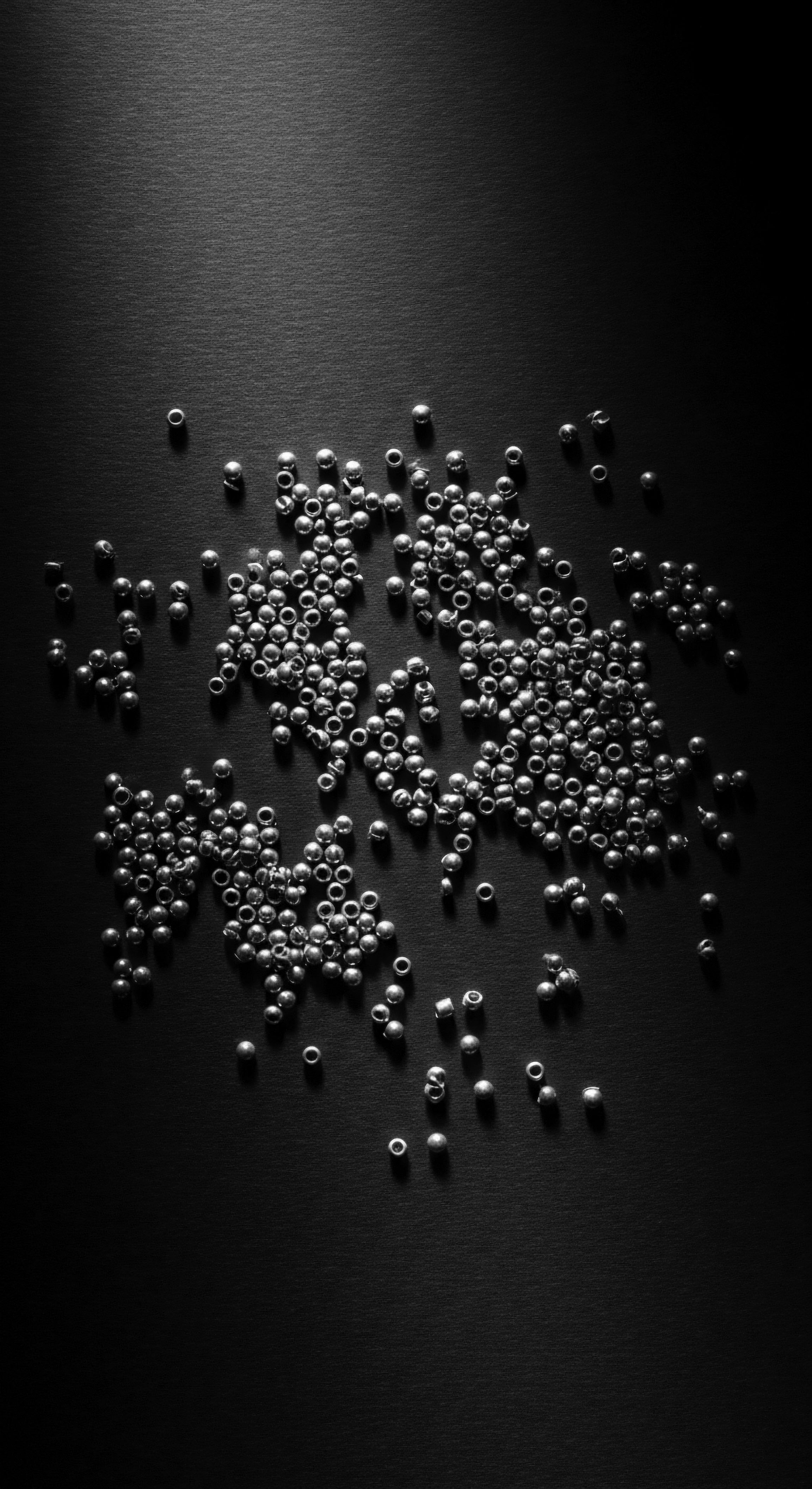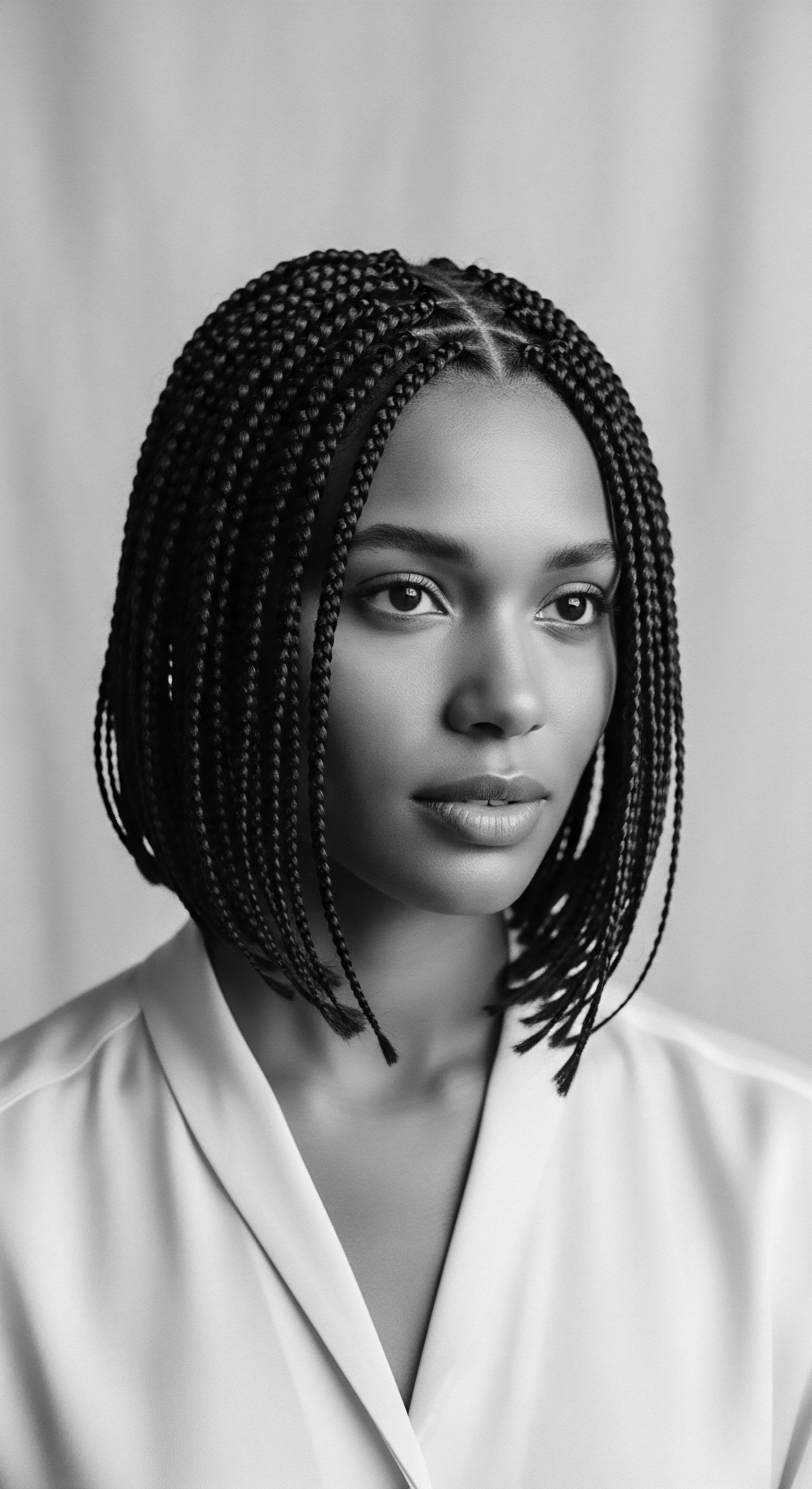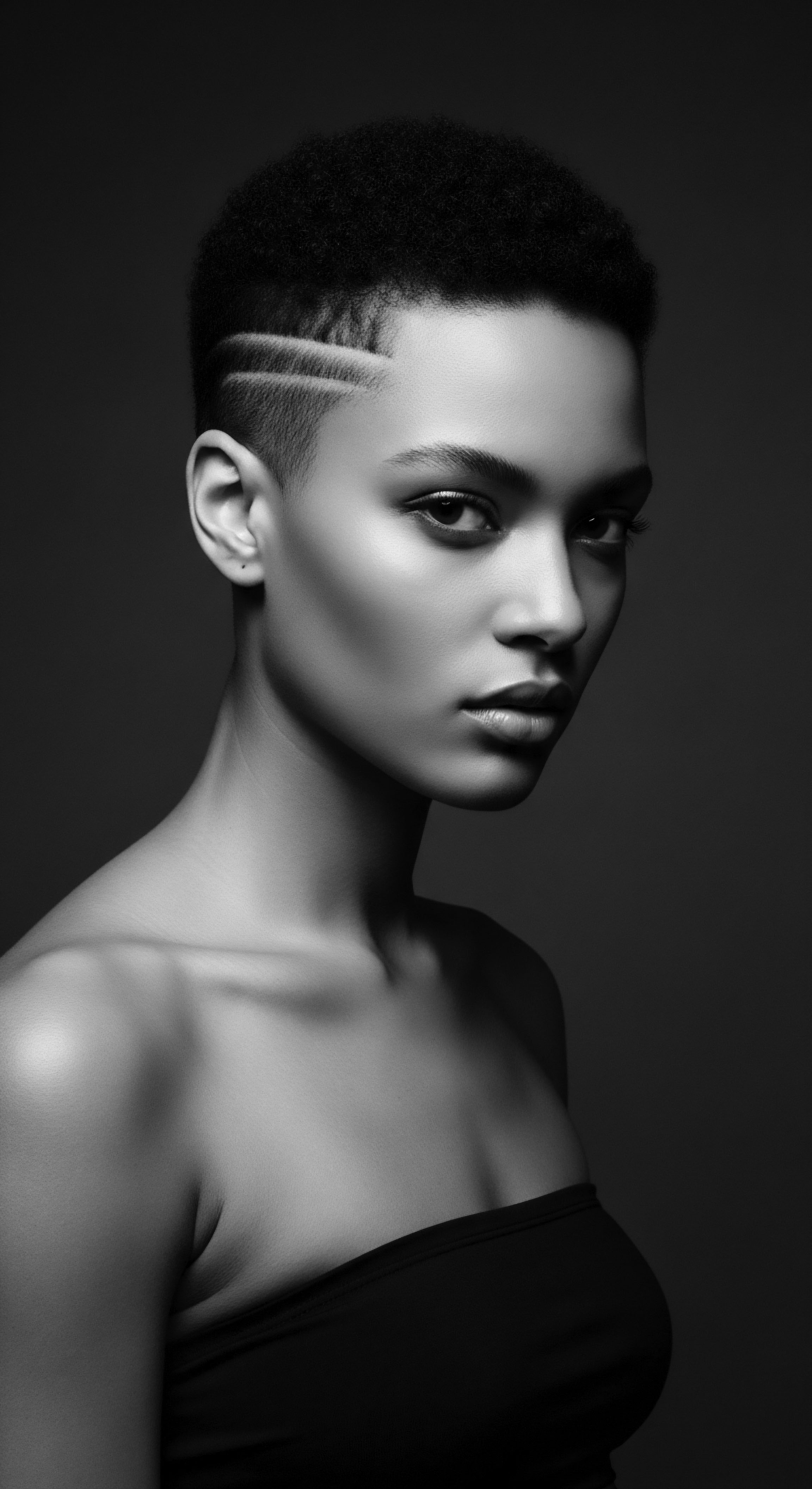
Fundamentals
The concept of ‘Historical Hair’ transcends a mere chronological account of styles; it stands as a profound declaration, an elucidation of the very strands that carry the imprints of generations. It represents a living archive, where each curl, coil, or wave holds a story, a lineage, and an enduring connection to ancestral wisdom. Within Roothea’s ‘living library,’ this term is not simply a designation for hair of the past. Instead, it is a statement, a recognition of hair as a sentient, memory-bearing entity, intrinsically linked to the collective memory and identity of communities, particularly those with textured hair.
This initial interpretation establishes that hair is more than a biological outgrowth; it is a cultural artifact, a silent witness to epochs and experiences. Its significance is deeply rooted in the daily rituals of care, the communal gatherings for styling, and the powerful symbolism it held across diverse societies. To understand Historical Hair is to grasp its fundamental meaning as a repository of human experience, a physical manifestation of heritage that has been passed down through countless hands and hearts.

The Embodied Legacy of Strands
Every strand of hair, especially those with the magnificent intricacies of texture, possesses a deep past, a unique biological blueprint, and a cultural narrative. It is a physical embodiment of legacy, connecting individuals to the earliest communal practices of care and adornment. This foundational understanding acknowledges that hair, in its raw form, is a testament to the evolutionary journey of humanity, adapting to environments and becoming a canvas for self-expression.
The inherent biological structure of textured hair, with its elliptical follicle shape and varied curl patterns, has always dictated distinct care approaches. These physiological characteristics, shaped by millennia of environmental adaptation, gave rise to ancestral practices that celebrated and sustained the hair’s unique properties. From ancient African civilizations, the communal acts of hair styling fostered bonds, transmitting knowledge and cultural values across ages.
Historical Hair represents the enduring spirit of textured strands, a living testament to ancestral wisdom and communal resilience.
Consider the earliest forms of combs, often crafted from bone or wood, or the use of natural ingredients like shea butter and various botanical oils. These were not arbitrary choices but were born from a deep, intuitive comprehension of what the hair required to thrive under specific climates and conditions. This early understanding forms the very bedrock of Historical Hair, a period when care was inextricably linked to the land and the shared knowledge of a community.
- Ancestral Adornments ❉ Hair in ancient societies served as a visual language, communicating a person’s social status, age, marital status, and tribal affiliation.
- Ritualistic Practices ❉ Many cultures considered hair sacred, believing it held spiritual power and connected individuals to the divine or ancestors.
- Communal Care ❉ Hair styling was often a shared activity, strengthening community bonds and facilitating the transmission of oral histories and traditions.

Intermediate
Moving beyond the foundational insights, the intermediate exploration of ‘Historical Hair’ deepens its sense as a dynamic entity, constantly evolving while retaining its core ancestral memory. It is a description of how hair has navigated the currents of time, becoming a powerful medium for identity, resistance, and celebration amidst shifting societal landscapes. The meaning of Historical Hair expands to encompass its active role in voicing personal and collective stories, often in the face of adversity.
This level of understanding recognizes the profound impact of historical events, particularly the transatlantic slave trade, on the trajectory of textured hair. During this period, what was once a vibrant symbol of identity and social standing became a target of dehumanization. Yet, the resilience embedded within Historical Hair meant that traditions persisted, adapting in ingenious ways to maintain a vital connection to heritage.

The Tender Thread of Continuity and Resistance
The journey of Historical Hair is marked by a tender thread of continuity, a subtle yet persistent refusal to be erased. Even when traditional tools and products were stripped away, enslaved Africans and their descendants found resourceful ways to care for their hair, often using basic ingredients and improvisational techniques. Head wraps, for instance, became not only practical protective coverings but also silent expressions of cultural memory and dignity.
The resilience of textured hair, its unique structure capable of holding intricate patterns, became a clandestine canvas for communication. These hair designs, far from mere aesthetic choices, transformed into silent languages. The hair’s very architecture, often deemed “unruly” by oppressors, became a secret weapon of self-preservation and communal connection.
| Historical Period Pre-Colonial Africa |
| Key Characteristics & Practices Intricate braiding, twisting, and coiling; use of natural oils (shea butter, coconut oil), herbs, and clays. Hair as a social marker. |
| Cultural Significance Identity, social status, age, marital status, tribal affiliation, spiritual connection. |
| Historical Period Transatlantic Slave Trade |
| Key Characteristics & Practices Forced shaving, disruption of traditional practices; improvised care with limited resources; head wraps. |
| Cultural Significance Resistance, survival, coded communication, preservation of dignity and heritage. |
| Historical Period Post-Emancipation to Mid-20th Century |
| Key Characteristics & Practices Adoption of straightening methods (hot combs, chemical relaxers) due to Eurocentric beauty standards; emergence of Black beauty entrepreneurs. |
| Cultural Significance Conformity, aspiration for social acceptance, economic opportunity within Black communities. |
| Historical Period Civil Rights & Black Power Movements (1960s-1970s) |
| Key Characteristics & Practices Re-embracing natural styles (Afro, braids, locs); rise of natural hair care industry. |
| Cultural Significance Black pride, self-acceptance, political statement, defiance of Eurocentric norms. |
| Historical Period This table illustrates the journey of textured hair care, demonstrating its adaptability and unwavering significance across historical shifts. |
The mid-20th century saw a powerful resurgence, where Historical Hair became a banner for liberation. The Civil Rights and Black Power movements catalyzed a profound shift, transforming textured hair into a potent symbol of self-acceptance and defiance against imposed beauty standards. The Afro, in particular, stood as a bold statement, reclaiming the beauty of natural texture and signaling a deep connection to African roots. This period represents a powerful chapter in the unfolding story of Historical Hair, where its meaning became overtly political and deeply personal.

Academic
The academic delineation of ‘Historical Hair’ establishes it as a complex biopsychosocial construct, a profound interpretation that synthesizes its elemental biology, its deep-seated cultural significance, and its evolving role in shaping human identity. This advanced understanding posits Historical Hair not merely as a relic of the past, but as an active agent in the ongoing discourse of heritage, a vibrant delineation of collective memory etched in the very protein structures of each strand. It is a specification that acknowledges hair’s intricate relationship with power dynamics, social structures, and the profound psychological impact of its care and perception within diasporic communities.
From a scholarly vantage point, Historical Hair represents the accumulated epigenetic and cultural narratives transmitted across generations, particularly within populations of African descent. The very morphology of textured hair, with its unique follicular structure—often oval or elliptical, causing the hair to coil and twist as it grows—presents distinct challenges and advantages. This inherent biological characteristic shaped ancestral care practices, prompting the development of specific tools, techniques, and botanical preparations that honored its natural state. These traditions, passed down through oral histories and lived experience, comprise a vast, often unwritten, ethnobotanical and anthropological record.

Echoes from the Source ❉ The Biological and Cultural Intertwining
The fundamental biological makeup of hair, a protein filament primarily composed of keratin, carries genetic markers that influence its texture, density, and growth patterns. For individuals with afro-textured hair, the unique helical structure and the angle at which the follicle emerges from the scalp contribute to its characteristic coiling. This inherent biological reality, shaped by millennia of evolutionary adaptation to diverse climates, particularly in equatorial regions, provides natural insulation and sun protection. This scientific grounding provides the initial statement for understanding the Historical Hair.
The profound connection between hair biology and cultural practice is particularly evident in pre-colonial African societies. Here, hair was more than an adornment; it was a living text, a system of communication, and a sacred link to the spiritual realm. The meticulous grooming rituals, often spanning hours and involving communal participation, reinforced social bonds and served as pedagogical moments for transmitting cultural norms and historical accounts. The density of these practices, the detailed attention to each segment of the hair, reflects a sophisticated understanding of its capabilities and its profound connection to personal and communal identity.
Historical Hair serves as a dynamic archive, meticulously documenting the resilience and cultural ingenuity of communities through the ages.
The forced disruption of these practices during the transatlantic slave trade represents a catastrophic rupture in the heritage of Historical Hair. Enslaved Africans were often subjected to head shaving, a brutal act designed to strip them of their identity and cultural memory. This act of dehumanization sought to sever the deep connection between the individual and their hair’s ancestral meaning. Yet, the ingenuity and resilience of the human spirit ensured that this connection, though challenged, was never fully broken.

The Unbound Helix ❉ Resistance and Reclamation through Textured Hair
Amidst the brutal conditions of slavery, hair transformed into a silent yet potent instrument of resistance. Enslaved women, often using rudimentary tools and materials, continued to braid and style hair, creating complex patterns that carried hidden messages. This historical example powerfully illuminates the Historical Hair’s connection to textured hair heritage and Black experiences. As recounted by various historical accounts, including those detailed in works exploring the cultural significance of Black hair, enslaved African women would intricately braid patterns into their hair, some of which were rumored to serve as maps to freedom, guiding individuals through unfamiliar territories to escape routes.
This specific historical example underscores the deep, practical, and symbolic import of hair beyond mere aesthetics, showcasing its instrumental role in survival and liberation during a period of immense oppression. The very act of styling hair, under such duress, became an act of profound defiance, a reclamation of self and heritage in the face of systematic erasure.
The meticulous patterns, often concealed beneath head wraps, were not simply decorative; they were coded communication, delineating pathways, or even hiding seeds for sustenance on arduous journeys. This covert use of hair as a strategic tool for survival is a testament to the unparalleled adaptability and profound cultural intelligence embedded within the heritage of textured hair. It stands as a powerful explication of how a biological feature, often targeted for disparagement, became a beacon of hope and a means of preserving ancestral knowledge.
The mid-20th century witnessed a resurgence of this defiance with the Civil Rights and Black Power movements, where the Afro became a powerful symbol of Black pride and self-acceptance. This period marked a conscious rejection of Eurocentric beauty standards that had long denigrated textured hair, instead celebrating its natural volume and form. The meaning of ‘good hair’ was redefined, shifting from a Eurocentric ideal to an affirmation of diverse, natural textures. This cultural revolution, driven by activists and artists, provided a critical turning point, allowing for a broader, more inclusive understanding of beauty and identity within the diaspora.
The academic study of Historical Hair extends to contemporary discussions on hair discrimination and the ongoing fight for hair freedom. Laws like the CROWN Act in the United States, designed to prohibit discrimination based on hair texture and protective hairstyles, represent a modern manifestation of the enduring struggle to protect and honor the heritage of textured hair. This legislative recognition highlights the continuing societal biases against natural Black hair and the necessity of legal protections to ensure equitable treatment. The impact of such legislation on mental health and self-esteem within Black and mixed-race communities is a critical area of ongoing research, underscoring the psychological weight hair carries beyond its physical presence.
The interdisciplinary examination of Historical Hair, drawing from anthropology, sociology, genetics, and ethnobotany, reveals its multifaceted nature. It is a phenomenon that transcends individual experience, embodying collective narratives of struggle, survival, and triumph. The intricate science of hair structure, combined with the rich historical tapestry of its cultural uses, provides a comprehensive lens through which to comprehend its profound significance. Understanding Historical Hair allows for a deeper appreciation of the wisdom encoded in ancestral practices and the enduring spirit of communities who have consistently found ways to celebrate their inherent beauty.
- Follicular Diversity ❉ The shape of the hair follicle, whether round, oval, or elliptical, directly influences the curl pattern, from straight to wavy, curly, or coily.
- Keratinous Memory ❉ Hair strands, composed primarily of keratin protein, possess a unique ability to retain environmental and physiological information, making them biological archives.
- Disulfide Bonds ❉ The number and arrangement of disulfide bonds within the hair’s cortex determine its curl intensity, with more bonds contributing to tighter coils.
- Hydrophilic Nature ❉ Textured hair often exhibits a more porous cuticle, which can lead to increased moisture loss, necessitating specific hydration-focused care practices that echo ancestral oiling traditions.
This detailed examination of Historical Hair, from its biological underpinnings to its complex cultural expressions, serves as a testament to its irreplaceable value within Roothea’s ‘living library.’ It is a designation that not only clarifies its physical attributes but also underscores its profound societal import and its unwavering connection to the ancestral wisdom that has shaped its journey through time. The substance of this understanding lies in recognizing hair as a dynamic element of heritage, continually being written and rewritten by the experiences of those who wear it.

Reflection on the Heritage of Historical Hair
As we close this exploration, the profound reverberations of ‘Historical Hair’ echo with resonant clarity, a soulful whisper from countless generations. It is more than a concept; it is a profound meditation on the journey of textured hair, its heritage, and its care, presented as a living, breathing archive within Roothea’s collection. The essence of Historical Hair is not confined to dusty tomes or museum exhibits; it lives within the gentle rhythm of a comb moving through coils, in the communal laughter of a braiding circle, and in the quiet strength of self-acceptance that radiates from a crown of natural beauty.
The meaning of this enduring legacy extends far beyond aesthetic appreciation. It speaks to a deep ancestral wisdom, a connection to the earth’s botanicals and the hands that transformed them into nourishing balms. It reminds us that hair care, at its purest, is a form of self-reverence, a continuation of practices that sustained spirits and bodies through trials and triumphs. The very act of caring for textured hair today is a conscious link to those who came before, a celebration of their ingenuity and an honoring of their spirit.
The journey of Historical Hair, from elemental biology and ancient practices, through the living traditions of care and community, to its role in voicing identity and shaping futures, stands as a testament to the indomitable spirit of textured hair heritage. Each curl, each strand, is a repository of stories, a vibrant thread in the collective memory, inviting us to listen, learn, and carry forward the wisdom of our ancestors. It is a continuous conversation, an unfolding narrative of beauty, strength, and unwavering connection to the source of who we are.

References
- Byrd, A. & Tharps, L. L. (2001). Hair Story ❉ Untangling the Roots of Black Hair in America. St. Martin’s Press.
- Tharps, L. L. (2006). Hair Story ❉ Untangling the Roots of Black Hair in America. St. Martin’s Griffin.
- Banks, I. (2000). Hair Matters ❉ Beauty, Power, and Black Women’s Consciousness. New York University Press.
- Mercer, K. (1994). Welcome to the Jungle ❉ New Positions in Black Cultural Studies. Routledge.
- Sweet, L. (2004). The Story of Hair. Yale University Press.
- White, S. (2019). The History of Black Hair ❉ A Journey Through the Eras. Independently published.
- Patton, T. (2006). Our Hair, Our Heritage ❉ The Cultural Significance of Black Hair. Black Classic Press.
- Johnson, D. & Bankhead, T. (2014). Black Hair in a White World ❉ The Social and Psychological Impact of Hair on African Americans. University Press of Mississippi.
- Frazer, J. G. (1922). The Golden Bough ❉ A Study in Magic and Religion. Macmillan.
- Synnott, A. (1987). Shame and Glory ❉ A Sociology of Hair. British Journal of Sociology, 38(3), 381-413.
- Delaney, C. (1994). Untangling the Meanings of Hair in Turkish Society. Anthropological Quarterly, 67(4), 159-172.
